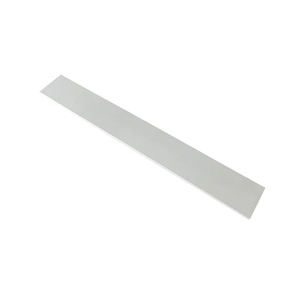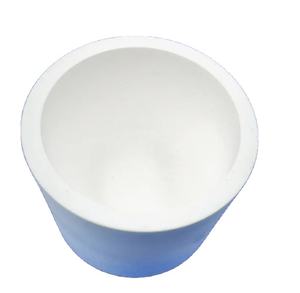Discover Premium Ceramic Products | Durability & Elegance United | Advanced Ceramics
PRODUCT PARAMETERS
Description
Introduction to Alumina Ceramics
Alumina ceramics are known for their high hardness, wear resistance, corrosion resistance, good electrical insulation and high temperature stability. According to the different alumina content, it can be divided into different grades, such as 95 porcelain, 99 porcelain, etc., among which 99 porcelain refers to ceramic materials with an alumina content of 99%. As the alumina content increases, its mechanical strength and electrical insulation properties will also increase accordingly.
Characteristics of Alumina Ceramics
High Hardness: Alumina ceramics have extremely high hardness, which makes it very wear-resistant and suitable for manufacturing abrasive tools and parts that require wear resistance.
Wear resistance: Due to its high hardness, alumina ceramics show excellent wear resistance and are suitable for manufacturing parts for long-term use.
Corrosion resistance: Alumina ceramics have good resistance to most acids and alkalis, making them widely used in the chemical industry.
Good electrical insulation: As an excellent electrical insulating material, alumina ceramics are widely used in electronic and electrical products.
High temperature stability: Ability to withstand extremely high temperatures without significant physical or chemical changes, which makes it an ideal choice for applications in high temperature environments.
Biocompatibility: In the medical field, certain grades of alumina ceramics are used to make medical devices such as artificial joints due to their good biocompatibility.
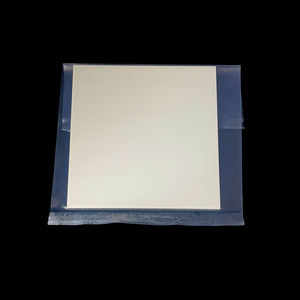
(High Temperature Resistant/alumina Ceramic Pipe/al2o3 Tube)
Specifications of High Temperature Resistant/alumina Ceramic Pipe/al2o3 Tube
High-temperature immune alumina ceramic pipes are made from aluminum oxide (Al2O3). These pipes take care of extreme heat up to 1700 ° C. They work well in heaters, kilns, and industrial heating systems. The material stays steady under high temperatures. It stands up to wear, rust, and chain reactions. This makes it reputable in severe environments.
Alumina ceramic pipes have high pureness degrees. Common grades include 95% and 99% alumina. Higher purity enhances performance. The pipes are dense and non-porous. This stops gases or liquids from leaking. Their smooth surface reduces rubbing. This assists materials flow quickly via the pipe.
These pipelines are strong mechanically. They withstand bending or breaking under pressure. Alumina ceramic has a hardness score near rubies. This makes it last longer than metal or plastic options. It deals with hefty lots without fracturing.
Thermal shock resistance is another vital function. The pipelines tolerate unexpected temperature level adjustments. Fast heating or air conditioning does not damage them. This is essential in procedures like metal treatment or glass manufacturing.
Alumina ceramic is electrically insulating. It does not perform power. This prevents short circuits in high-temperature electric configurations. The product resists oxidation. It does not react with many acids or antacid. This keeps it stable in chemical handling.
Sizes and shapes are adjustable. Usual sizes vary from 5mm to 200mm. Wall surface thickness differs based on application requirements. Longer lengths are readily available for massive systems. Setup is simple. The pipelines attach making use of standard installations.
These pipelines match industries such as metallurgy, aerospace, and energy. They operate in semiconductor production and chemical plants. Their sturdiness cuts maintenance costs. They lower downtime in industrial procedures.
Personalized options consist of flanges, coatings, or threaded ends. Technical support assists match pipe specifications to project demands. Testing ensures high quality prior to delivery. Efficiency information covers temperature level limitations, stress rankings, and chemical compatibility.
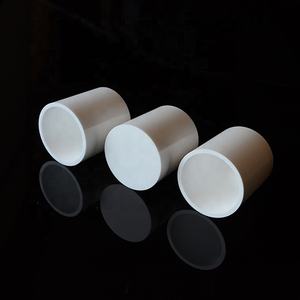
(High Temperature Resistant/alumina Ceramic Pipe/al2o3 Tube)
Applications of High Temperature Resistant/alumina Ceramic Pipe/al2o3 Tube
High-temperature resistant alumina ceramic pipes, additionally called Al2O3 tubes, are important components in markets requiring extreme warm resistance and resilience. These pipes are made from alumina, a product with over 95% light weight aluminum oxide material. This composition guarantees security in atmospheres going beyond 1600 ° C. Their framework resists thermal shock, chemical rust, and mechanical wear, making them suitable for extreme problems.
These ceramic pipes are widely used in metallurgical processes. They transfer molten steels like steel or light weight aluminum without breaking down. Their non-reactive nature avoids contamination of high-purity metals. Heating system cellular linings and thermocouple defense tubes usually make use of Al2O3 tubes because of their ability to hold up against extended direct exposure to fires and corrosive gases.
The chemical market relies on alumina ceramic pipes for taking care of aggressive materials. Acids, antacid, and solvents pass through these tubes without creating disintegration. This lowers maintenance expenses and downtime in production lines. High-purity Al2O3 tubes are essential in semiconductor manufacturing. They make sure tidy atmospheres for expanding crystals or processing silicon wafers.
Power generation systems utilize these pipes in coal-fired plants and incinerators. They direct warm exhaust gases successfully while resisting ash abrasion. Thermal nuclear power plant take advantage of their reduced thermal conductivity, lessening power loss throughout warmth transfer. Aerospace applications include rocket engine components. Al2O3 tubes take care of extreme temperatures from fuel burning without structural failing.
Laboratory devices like high-temperature kilns and analyzers incorporate these tubes. Their electrical insulation residential or commercial properties make them appropriate for shielding spark plugs and sensing units. Personalized sizes and shapes enable combination into complicated equipment. Alumina ceramic pipelines are likewise utilized in clinical tools needing sterilization at high heat.
The material’s firmness and smooth surface area avoid material build-up inside the pipes. This makes certain consistent flow rates in industrial processes. Al2O3 tubes are choices to metal alloys in destructive atmospheres. They last much longer, minimizing substitute regularity. Their light-weight nature simplifies installment in large-scale systems.
Industries focus on these pipelines for crucial high-heat applications. Reliability and effectiveness drive their fostering throughout fields.
Company Introduction
Advanced Ceramics founded on October 17, 2014, is a high-tech enterprise committed to the research and development, production, processing, sales and technical services of ceramic relative materials and products.. Since its establishment in 2014, the company has been committed to providing customers with the best products and services, and has become a leader in the industry through continuous technological innovation and strict quality management.
Our products includes but not limited to Silicon carbide ceramic products, Boron Carbide Ceramic Products, Boron Nitride Ceramic Products, Silicon Carbide Ceramic Products, Silicon Nitride Ceramic Products, Zirconium Dioxide Ceramic Products, Quartz Products, etc. Please feel free to contact us.(nanotrun@yahoo.com)

Payment Methods
T/T, Western Union, Paypal, Credit Card etc.
Shipment Methods
By air, by sea, by express, as customers request.

5 FAQs of High Temperature Resistant/alumina Ceramic Pipe/al2o3 Tube
High temperature resistant alumina ceramic pipes (Al2O3 tubes) are widely used in industrial settings. Here are answers to common questions. What is an alumina ceramic pipe? It is a tube made from aluminum oxide, a ceramic material. This material is known for high hardness, heat resistance, and chemical stability. These pipes handle extreme temperatures and harsh environments without breaking down. They are often used in furnaces, kilns, or chemical processing equipment.
How much heat can these pipes handle? Alumina ceramic pipes withstand temperatures up to 1700°C (3092°F). Their structure stays stable even under prolonged heat exposure. This makes them better than metal pipes in high-heat applications. Metals might melt or warp, but alumina ceramics keep their shape.
Where are these pipes typically used? They are common in industries like steel production, power plants, and semiconductor manufacturing. They transport molten metals, hot gases, or corrosive chemicals. They also protect sensors or instruments in high-temperature setups.
Why choose alumina ceramic over metal or plastic pipes? Alumina resists corrosion, wear, and thermal shock. Metal pipes rust or degrade in acidic environments. Plastic pipes melt at high temperatures. Ceramic pipes last longer in extreme conditions, reducing replacement costs.
How should these pipes be handled during installation? Avoid mechanical impact or sudden temperature changes. Alumina ceramic is strong but brittle. Use proper supports to prevent stress. Ensure fittings match the pipe’s thermal expansion rate. Clean surfaces before joining to avoid leaks. Follow manufacturer guidelines for heating or cooling cycles to prevent cracks.
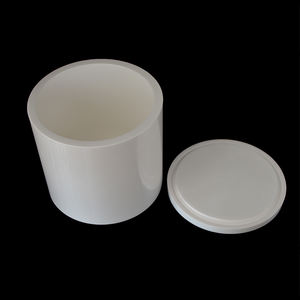
(High Temperature Resistant/alumina Ceramic Pipe/al2o3 Tube)
REQUEST A QUOTE
RELATED PRODUCTS
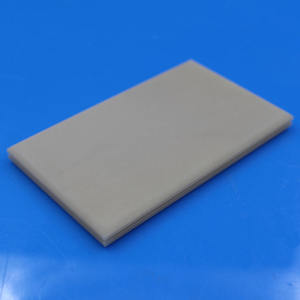
Al2o3 Crucible Alumina Ceramic High Refractoriness Alumina Al2O3 Ceramic Crucible
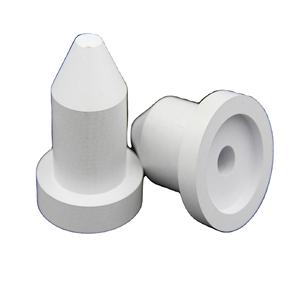
Industrialheat Resistant 95% 99% Alumina Ceramic Crucible Ceramic Melting Pot
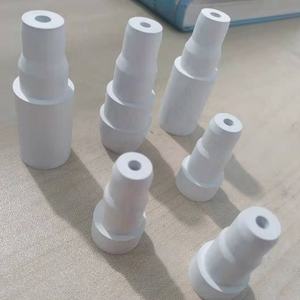
95% 96% 99% Alumina Aluminum Oxide Al2O3 Ceramic Bulk Round Plate Disc
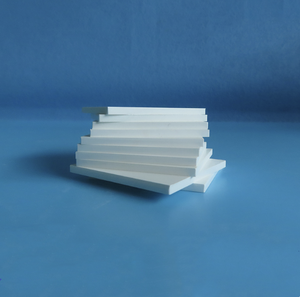
Stocked Alsint 99.7% Al2O3 Alumina Ceramic Crucible Industrial Ceramic Part for Glass Melting Custom Cutting Service
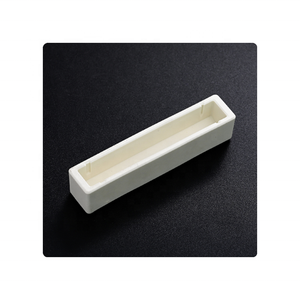
High Quality Alumina Ceramic Package Housing
